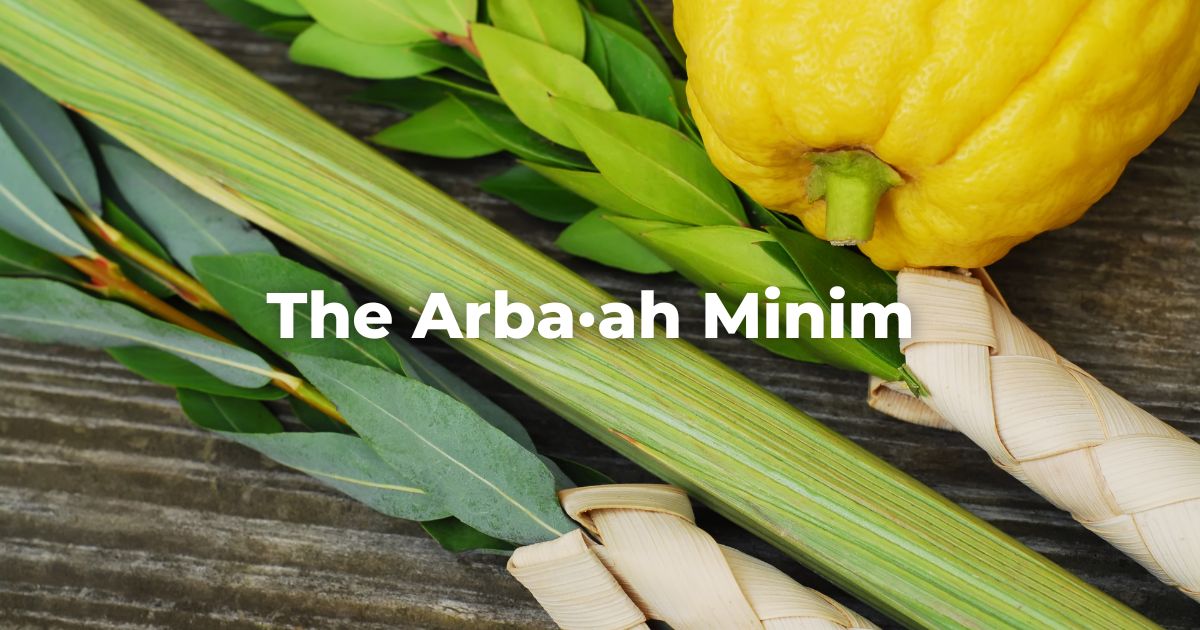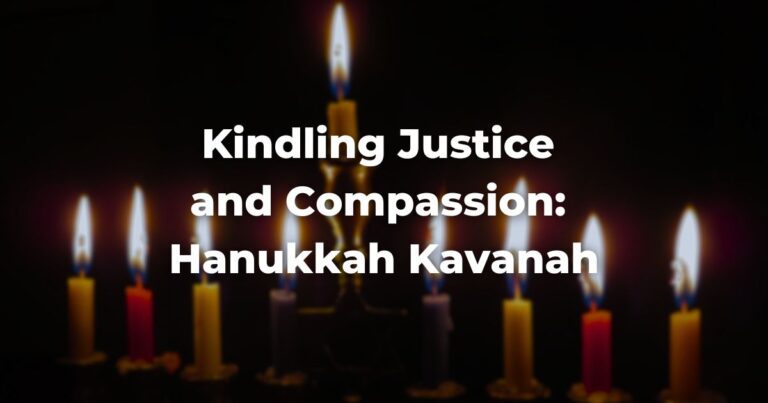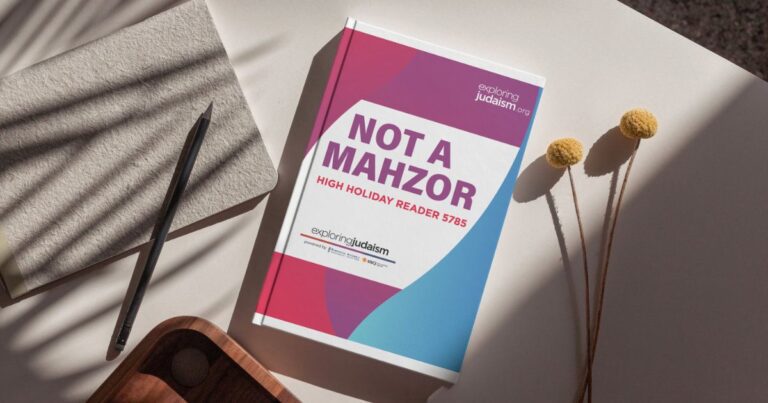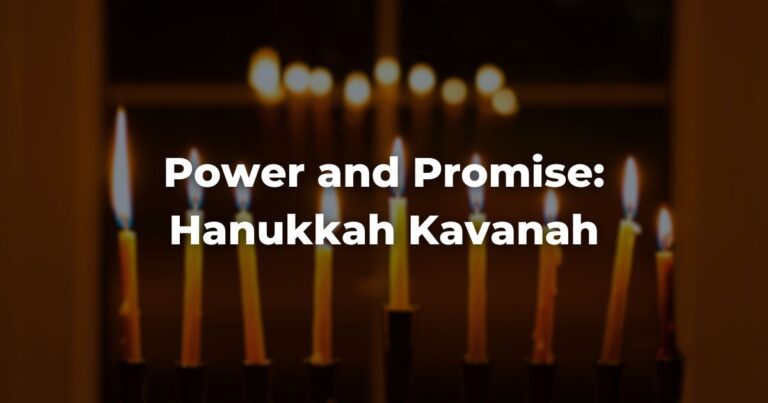Besides dwelling in a sukkah, the other significant mitzvah of Sukkot is the taking up of the arba·ah minim, literally “the four species.”
What are the four species? The Arba·ah Minim?
These are better known as the lulav and etrog after the two most prominent of the four: the palm branch and the citron. The other two species are attached to the sides of the palm branch: the myrtle branches, called hadasim, and the willow branches, called aravot.
The biblical source for this observance is Leviticus 23:40: “On the first day, you shall take the product of hadar trees, branches of palm trees, boughs of leafy trees, and willows of the brook, and you shall rejoice before the Eternal, your God, for seven days.” The rabbis took the reference to the fruit of the hadar, translated to mean citrus, to be the etrog and the boughs of leafy trees to refer to the myrtle.
Why these species?
There are many wonderful explanations as to why these specific species were chosen for use on Sukkot.
One has it that the “four species” represent the different parts of the human body: the tall palm represents the spine, the ovoid myrtle leaf represents the eyes, the willow represents the lips, and the etrog represents the heart. By bringing them together, the worshiper indicates his or her intention to unite all the parts of the body in the worship of God.
Alternately, the four species are likened to different kinds of Jews. The etrog, which has both taste and fragrance, represents the pious, learned Jew who combines learning with good deeds. The lulav, which has a pleasant taste but no fragrance, represents the kind of Jew who pursues sacred learning, but who fails to perform many positive deeds. The myrtle, which has a delightful fragrance but no taste, represents the kind of Jew who actively does good deeds, yet who never takes the time to study TorahRefers to the first five books of the Hebrew Bible, the Tanakh, also called the Five Books of Moses, Pentateuch or the Hebrew equivalent, Humash. This is also called the Written Torah. The term may also refer to teachings that expound on Jewish tradition. Read more seriously. Finally, the willow, which possesses neither fragrance nor taste, is representative of the kind of Jew who combines a lack of interest in Torah study with a lack of interest in performing good deeds.
Yet the symbolism of the lulav and etrog suggests they can still all come together in the worship of God. The Jewish world is not complete without all types of people. All have their personal places in God’s plan for the world, and each has something personal and irreplaceable to contribute to its fulfillment (Va-yikra Rabbah 30:12).
How a lulav and etrog should be made
A lulav and etrog set can be purchased through most synagogues, and should include one palm frond, two willow branches, three myrtle branches, and one etrog.
When they are attached to the palm, the myrtle is placed on the right of the palm branch, the willow on the left, and the spine of the palm should be facing the holder.
The palm frond should not be too small and certainly not less than about sixteen inches long. Similarly, the myrtle and willow branches should be at least twelve inches long.
In any event, the palm frond should be at least four inches longer than the myrtle and the willow (SA Oraḥ Ḥayyim 650:1). For its part, the etrog should be as least as large as a chicken’s egg (SA Oraḥ Ḥayyim 648:22).
These specifics on lulav sizes can be found in A Guide to Jewish Religious Practice by Rabbi Isaac Klein (z’l), p.162.
Because so much of this mitzvah centers around the beauty and enjoyment of the arba·ah minim, effort should be made to make sure that the various components are kept as attractive and fragrant as possible throughout the festival and to prevent them from drying out.
One popular method, for example, is to take the aravot out of the holder, wrap them in damp paper toweling, and leave them refrigerated until it is time to use them again the following day.
We strive to keep the willow and myrtle fresh to make the mitzvah pleasant.
If the pitom of the etrog (that is, the tip on the opposite side from the green stem) breaks off, it is invalid for use and a blessing should not be recited until a suitable replacement is found.
What to use the Arba·ah Minim for
The lulav and etrog are used as part of the holiday worship. The general practice is to take the lulav and etrog in hand just prior to the recitation of the Hallel Service, thus immediately following the Morning Service and before the Torah Service. If for some reason the mitzvah is not performed just before Hallel, it may be performed at any time during the day.
Click the button for our guide on how to shake the lulav and etrog.
Spirituality and meaning behind the Arba·ah Minim
In some ways, the mitzvah of the lulav and etrog presents a bit of a challenge to moderns accustomed to rituals that are transparent in their meaning and easily decipherable. Still, one of the dangers in contemporary Judaism is precisely that we have become overly cerebral in our approach to religion.
After the intense High Holiday period of prayer and introspective thought, Sukkot appeals to our senses. We build the sukkah with our hands, and we smell the four species and shake them back and forth as a sign of our exuberant sense of thanksgiving to God for all that we have in this world. Judaism makes demands both on the intellect and the spirit, both on the brain and on the heart, and Sukkot is a vibrant reminder of this lesson.
The lulav and etrog are not used on Shabbat for the same reason the shofar is not sounded when Rosh Hashanah falls on Shabbat: to prevent the desecration of the Shabbat by those who might feel compelled to carry the ritual accouterments of the festival to a synagogue. Anticipating this potential problem, the rabbis established that these items not be used at all on Shabbat.
Adapted with permission from The Observant Life.
Authors
-

-

The Observant Life: The Wisdom of Conservative Judaism for Contemporary Jews distills a century of thoughtful inquiry into the most profound of all Jewish questions: how to suffuse life with timeless values, how to remain loyal to the covenant that binds the Jewish people and the God of Israel, and how to embrace the law while retaining an abiding sense of fidelity to one’s own moral path in life. Written in a multiplicity of voices inspired by a common vision, the authors of The Observant Life explain what it means in the ultimate sense to live a Jewish life, and to live it honestly, morally, and purposefully. The work is a comprehensive guide to life in the 21st Century. Chapters on Jewish rituals including prayer, holiday, life cycle events and Jewish ethics such as citizenship, slander, taxes, wills, the courts, the work place and so much more.
View all posts






